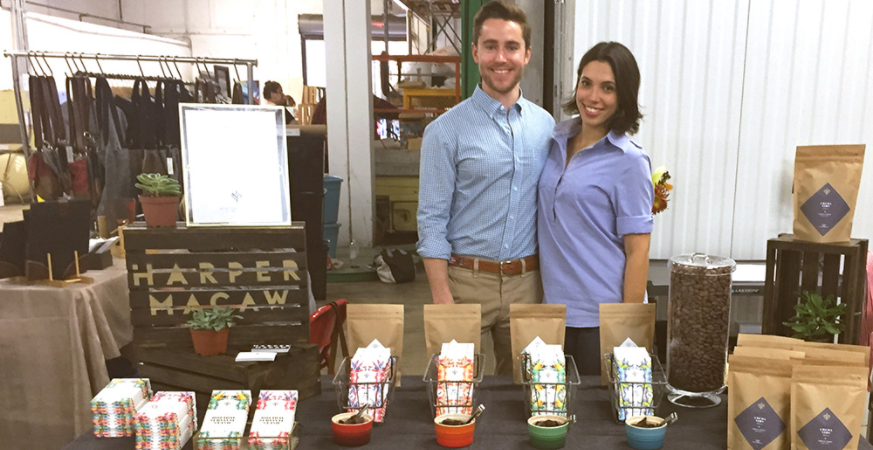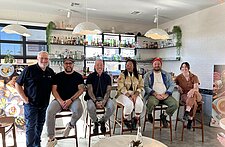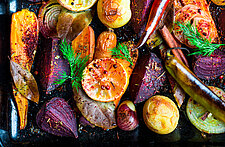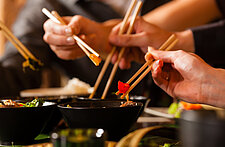When most folks think of seasonality it’s normally in preparation of Winter, Spring, Summer and Fall; but when consumers, more specifically foodies, think of seasonality it is usually in anticipation of pumpkin spice lattes or breast cancer pink cookies. At Symrise we are constantly looking for ways to innovate and that means going beyond the scope of normal. It also means not only looking for inspiration within, but outside of the box — our box being the food and beverage space. To do that, we teamed up with Brand Genetics to interview eleven experts spanning several, very different industries to get their take on seasonality in hopes of guiding you on your path to being informed, inspired, and innovative.
Colin Hartman, Co-Founder & CEO of Harper Macaw — a fine chocolate manufacturer founded on a big yet simple objective: to turn chocolate into a force for tropical reforestation — joined us to talk about how seasonality plays out for a small business with international roots and operations.
Where or what do you get your inspiration from?
I look at what’s currently in season. I also try to understand the psychological attachment to the things that people associate with a season. I keep a pulse on what competition is doing, there is a fine line between following the crowd and going in the other direction. Listening to consumers as well, but also looking at trends in areas like beer, wine, cheese, and coffee.
What are some drivers of seasonality and LTOs (limited-time offers)?
 Seasonality and LTO is particularly important for food and beverage, especially nowadays as we get back to more locally sourced ingredients and there’s more of a focus on what we should be eating during different seasons. LTOs build people’s comfort and admiration for your brand. People like the idea of finding excitement and novelty so we like to play off of different psych concepts like: scarcity, warmth, and nostalgia — which gets folks remembering certain treats based on seasons (holidays, summer refreshment, etc.). These concepts are there to build excitement, but also an important product development method. For us Bourbon Barrel just became more popular and so we decided to keep it; coffee infused has been another hit.
Seasonality and LTO is particularly important for food and beverage, especially nowadays as we get back to more locally sourced ingredients and there’s more of a focus on what we should be eating during different seasons. LTOs build people’s comfort and admiration for your brand. People like the idea of finding excitement and novelty so we like to play off of different psych concepts like: scarcity, warmth, and nostalgia — which gets folks remembering certain treats based on seasons (holidays, summer refreshment, etc.). These concepts are there to build excitement, but also an important product development method. For us Bourbon Barrel just became more popular and so we decided to keep it; coffee infused has been another hit.
SUBSCRIBE To The Weekly In-Sight Newsletter!
Chocolate itself is a seasonal product; when it is hot outside people don’t want chocolate so we need to balance that with added interest like fruity vs cozy flavors. Some people love pumpkin and peppermint, but it is too seasonal-oriented. Still, this can be a great test, if a flavor or ingredient doesn’t do well in the season it is meant to fit in then that’s probably a good sign it is not a winner overall.
Can you talk to us about small vs large companies and subtle vs broad flavors?
 Any Food & Beverage company becomes known for something — like Anheuser-Busch InBev’s Budweiser brand — we have our mainline that we’re not going to change, but when you deal with niche companies, you get natural variation. That’s exciting; when you deal with craft or artisan ingredients, people like the fact that it is going to change.
Any Food & Beverage company becomes known for something — like Anheuser-Busch InBev’s Budweiser brand — we have our mainline that we’re not going to change, but when you deal with niche companies, you get natural variation. That’s exciting; when you deal with craft or artisan ingredients, people like the fact that it is going to change.
RELATED: Exclusive Interview With Chris Amirault - Seasonality In The Cocktail Space
You can make a Pumpkin or Egg nog latte, but everyone does that; so rather than developing new products that taste exactly how consumers expect them to taste, we noticed they like the idea of feeling special nuance and subtlety. Hops in IPA can hide the quality and imperfections just like lots of vanilla and sugar can hide low cocoa quality in chocolate. We go the adjunct route so people can really recognize that the flavor is there.
For example, aging cocoa beans in a bourbon barrel impart the flavors of the bourbon and wood using a Bordeaux barrel (French oak). Consumers start to develop more appreciation for that subtlety and move beyond the big obvious flavors.
What are some of the challenges you face with seasonality in the chocolate space?
It can be very expensive. Having smaller quantities and fewer ingredients because people are willing to pay for novelty and scarcity, doesn’t necessarily mean more profits.
The biggest takeaway from this series of interviews is that seasonality is about about novelty (think charcoal ice cream), flavor (pumpkin spice latte), functional benefit (plant-based everything), association (gingerbread cookies during Christmas), excitement (unicorn frappe), and priming (marketing). It is also a reflection of our world — weather, time of year, ingredients, locales, cultures, etc. Seasonality can be a good product development tool with the right balance of market curation and experimentation. At the same time, it can be expensive and hard to pull off without a healthy balance of change and stability.
This series is backed by our Seasonality Initiative where we help our customers develop pipelines of new concepts and flavor ideas for the seasons and major holidays. If you have questions or would like to learn more about our initiative please contact us.
Join The In-Sight Community, Subscribe To The Weekly Newsletter!
Images complimentary of Harper Macaw's Instagram (@harpermacaw).





